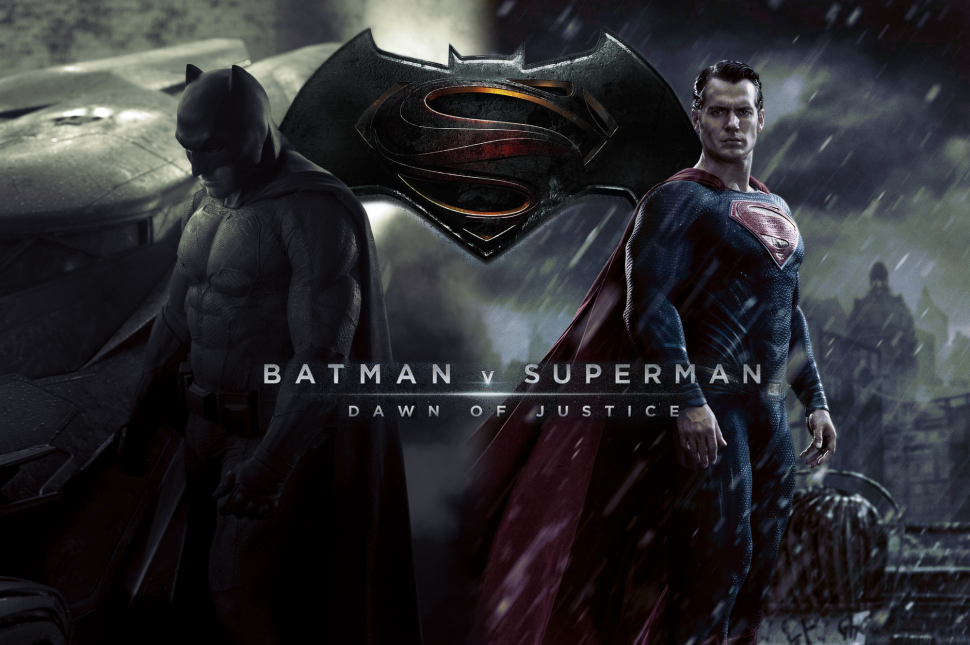
Batman v. Superman: Dawn of Justice is a convoluted title for a really convoluted, strangely made superhero film that feels like the product of studio meddling, a poorly-executed script, and someone being a tryhard. And yet, despite all these aspects really bringing down the entire experience, I can’t say the movie could be described as “terrible”, exactly. I describe it more as an “ok” superhero genre exercise brought down by some of the most heinously mismanaged execution for a property like this. Also, SPOILERS, not that that matter.
First off: in reality, BvS actually isn’t a crossover movie – at least for the first hour and a half. As a direct sequel to Man of Steel, Zack Snyder’s weirdly dour and grim Superman film, it tries to continue the themes of that film (how much power can a person have? What if an alien with God-like power suddenly appeared? How would governments react and respond?) by introducing Lex Luthor. Anyone with a vague familiarity in comic books knows Luthor believes Superman a threat to humanity, as well as his personal superiority over most of Earth’s denizens. Unfortunately, Jesse Eisenberg seems forced to turn Luthor into the “psychopath eccentric” trope we’ve seen far too much in the last decade since The Dark Knight – and they definitely don’t make him interesting enough as a character to make for a compelling villain. You have to rely on previous knowledge of Superman, and that’s a bad thing.
So, Luthor has two objectives: to ruin Superman’s reputation among the people who revere him (and the U.S. Government, I guess) and make him do evil things. And, unlike in other media, they actually make a go of doing a “Superman turns dark” angle. They’re just too on the nose with the themes they are trying to convey (note to writers: saying “THIS IS A THEME” using television talking heads does not constitute subtle storytelling). The plot to get there is extremely convoluted and I won’t be going over it here – suffice to say that intimations of its nonsensical nature are highly exaggerated. Watching the movie and paying attention from end to end of the 2 hour and 35 minute runtime, everything made sense (well, except for why Lois Lane throws the spear away, then wants to get the spear – there’s no explanation as to how she would know what’s happening and adjust accordingly). However, the big problem isn’t so much how they get there rather than it never needed to be this complicated in the first place!
And part of the reason why this Superman film’s plot became so complicated arises from the introduction of Batman in the DC Extended Universe. At some point in development of a Man of Steel sequel, it’s clear that Warner Brothers wanted a franchise vehicle to call their own. So, Batman gets shoehorned into the Superman movie – we get the origin story (UGH), we see Batman work, and then the audience gets incredibly confused about who’s the main character here. Two films take place at the same time, and the screenwriters try their best to compensate for unforeseen circumstances – but, it just does not work at all. Without a central character to root for, it’s hard to really have any emotional investment in what happens.
Now, I imagine this might work under the right circumstances: showing the asymmetry of information, and allowing Superman and Batman’s motivations develop separately, might have made for some interesting setup to the titular conflict. I mean, they certainly set things up that way. Self-indulgent dream sequences probably aren’t the right way to get there, but at least they try. Unfortunately, as the title of the film states, we also need to jam in some Justice League stuff, so let’s throw Wonder Woman in here for what constitutes a cameo part. She has zero character development, and basically turns out to be a deus ex machina so that the final conflict can actually resolve itself. She appears for no other reason than to set up a new movie – same goes for Aquaman, Cyborg, and (in a part that was hilariously distressing, confusing, and all-around psychotic) The Flash. Scenes that exist for no reason, at all, for the main plot appear all the time in BvS, to the film’s detriment.
And hey, why not end the film with a giant monster fight, right? Let’s just abandon any and all pretension of developing some sort of emotional climax, and just throw in Big Monster Dude! The Avengers did it, so why not? If anything shows a clear example of how this film turned out from tons of cooks in the kitchen, the largely unexpected climax of Doomsday certainly indicates a massive problem of random plot changes for no reason. Batman and Superman don’t even fight that long, maybe for all of 10 minutes? Instead, we fight random thing that Lex Luthor created from a Krypton ship the government recovered in the first film. How does he know how to do this? Doesn’t matter, I guess? Probably a studio executive cut that part out, citing it as “unimportant”. My guess is that the Ultimate Edition fixes a lot of these issues – an extra 30 minutes can help!
But, really, this film takes way too long to get going, in a far too complicated way, with too many competing notions of what should and shouldn’t be in the film proper. Ultimately, that’s what makes BvS a mess – a compelling mess, but a mess nonetheless. The most disappointing part is that it definitely could have been an interesting film with some focus and maybe cutting some of these characters out, but Warner Brothers seems determined to create a cinematic universe, even if the films suffer as a result. At least Marvel finds ways to do this without messing up their films!
